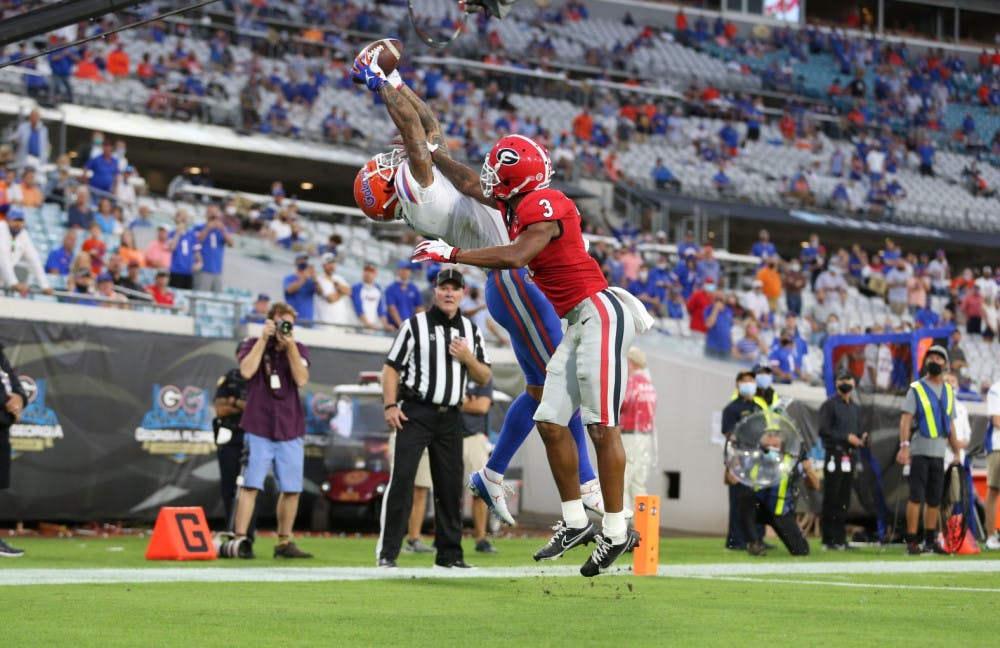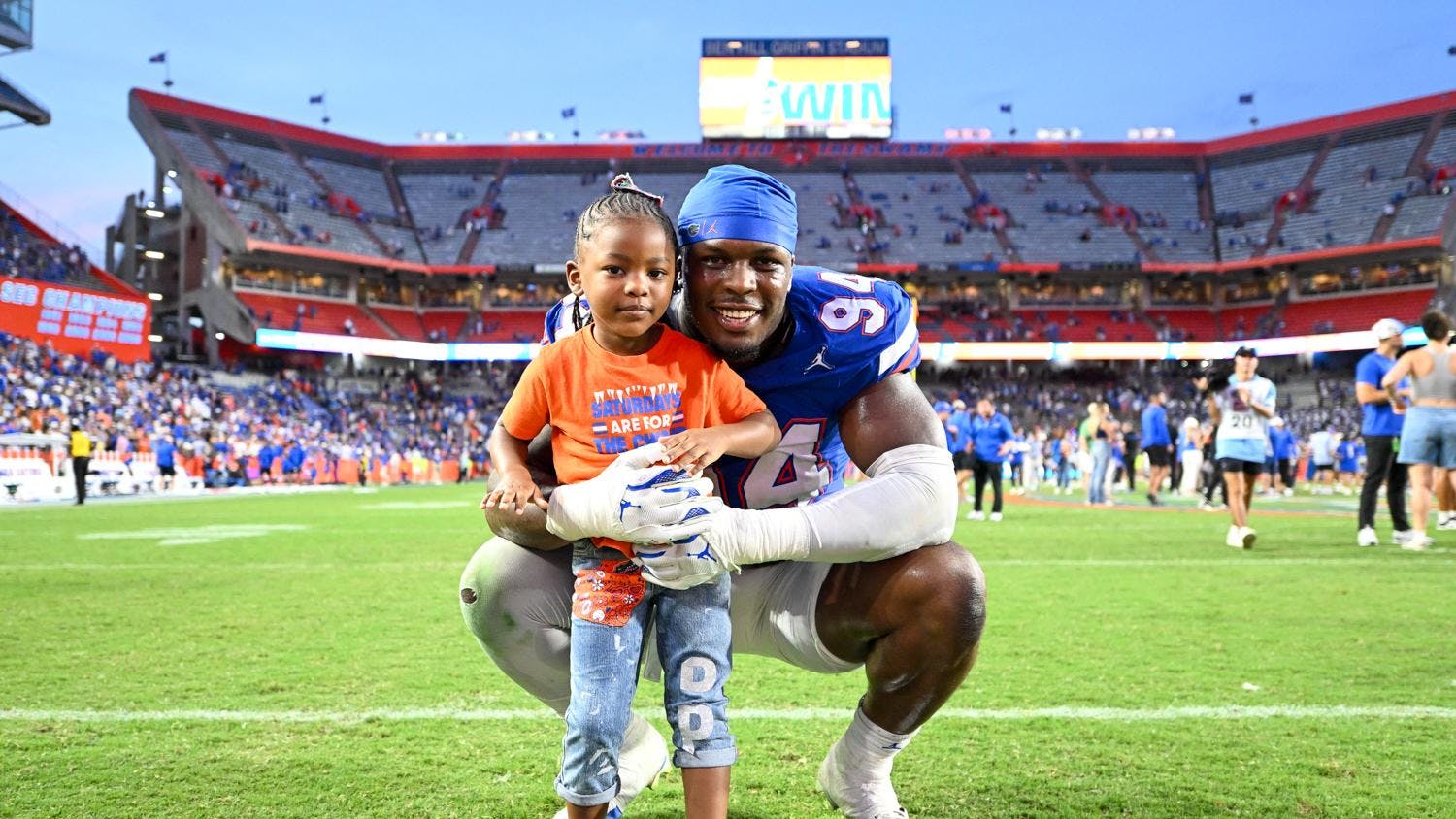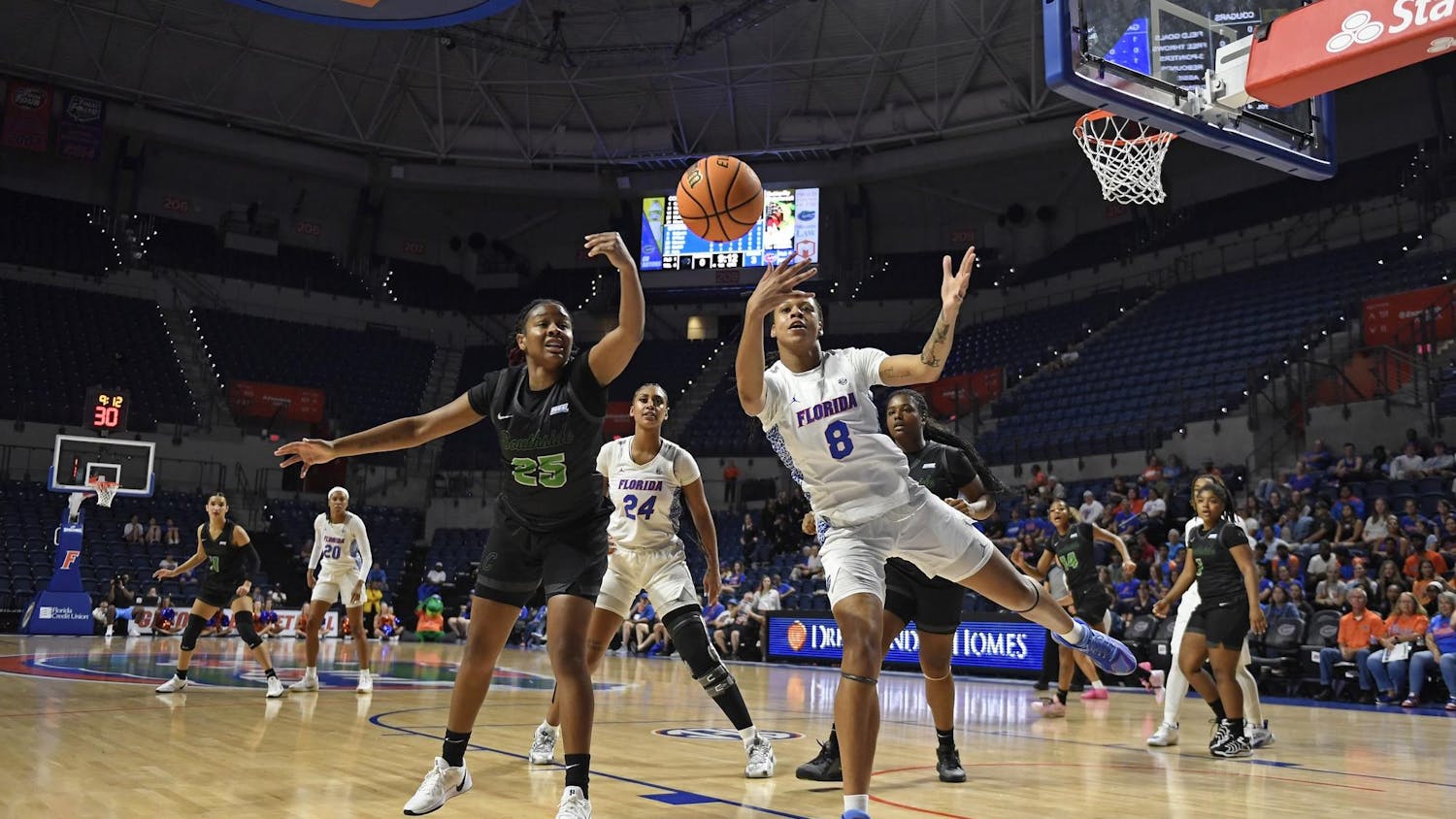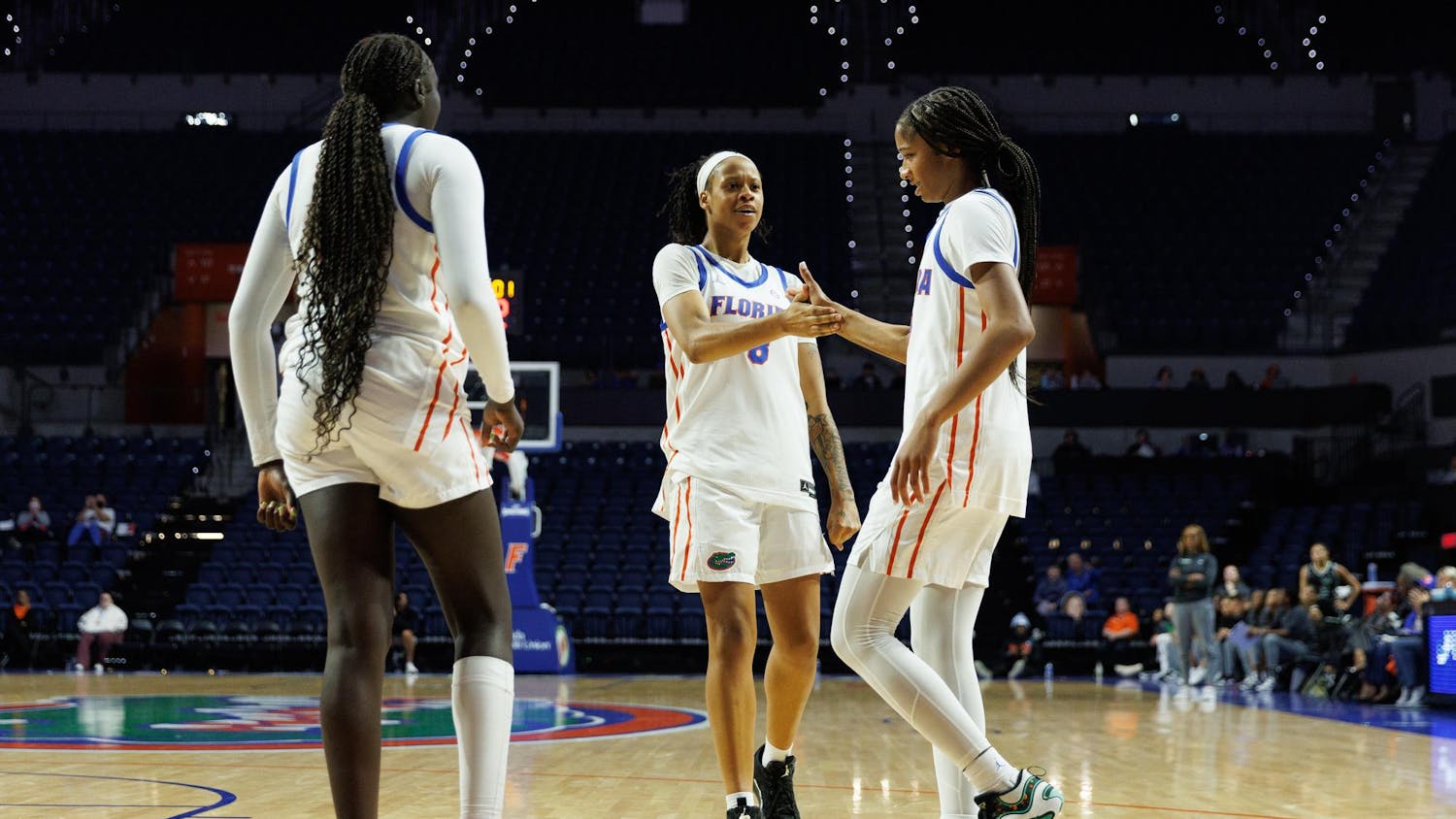Wide receiver Trevon Grimes brushed past Georgia cornerback Tyson Campbell’s press coverage and streaked toward the end zone. Quarterback Kyle Trask identified that Grimes had a step on his man and lobbed a pass toward the end zone.
The 6-foot-4 senior leaped and plucked the lob out of the darkening Jacksonville sky in the end zone for a touchdown. The score gave the Gators a commanding 38-21 lead heading into halftime, and there were no signs of the offense slowing down any time soon.
Except that is exactly what happened in the second half. Florida still won 44-28, but it was outscored 7-6 in the second half. That could have been worse if Georgia defensive back Mark Webb hadn’t dropped a surefire pick-six in the fourth quarter.
This isn’t the first game that Florida’s offense has trailed off in the second half, either. It was the second time that the Gators have been outscored in the second half, as Texas A&M tallied 24 points to Florida’s 17 in UF’s upset loss.
In the first half, the Gators have been one of the best offenses in the country at 26.2 points per game, which is eighth overall. The second half, however, sees the Gators fall to 16.2 points per game and 37th nationally.
Some of that has to do with Florida holding big leads against Ole Miss, Missouri and South Carolina in the second half. Teams that are leading by multiple possessions are going to run more in the second half to keep the clock rolling and close out the game. The Gators are a pass-happy team in the first half (1.5 passes for every run) but run the ball significantly more in the second half (1.14 passes for every run).
“I think a lot of it is just how the game is going and how we manage the game,” Gators coach Dan Mullen said. “Every game plays out very differently, and a lot of it has to do with certain endgame strategies and what you’re trying to accomplish.”
However, the problem isn’t just that the Gators are running the ball more in the second half. Yes, they aren’t great at running the ball anyway, but both running and passing plays have been much less efficient in the second half so far.
First, the difference in Expected Points Added (EPA), a metric that values plays in terms of points, for Florida’s offense between both halves is stark.
UF’s EPA per play in the first half is 0.35, which is behind only Minnesota out of teams with at least 100 plays in each half this year. However, that dips to 0.04 in the second half, which ranks 30th overall. The -0.31 difference between the two halves is the fourth-worst in the country.

The issue is not that the difference itself is negative: that’s expected when a team is playing with a big lead. Teams like No. 1 Alabama (-0.14), No. 2 Notre Dame (-0.2), No. 4 Clemson (-0.18) and No. 15 Coastal Carolina (-0.28) have all seen noticeable declines in their offense in the second half. The problem for Florida, however, is that the drop-off has been much bigger.

The most disturbing difference between Florida’s first-half offense and its second-half offense is in the passing game. The Gators have the best EPA per pass in the country in the first half (0.57) before plummeting to 17th in the second half (0.17). The dip in success rate (the percentage of “successful” plays) on passing plays isn’t as dramatic, but it still takes UF from first to 13th in the nation.
Also, for trying to focus on running out the clock and keeping possession of the ball on offense in the second half, the Gators have done a poor job. Florida has only run 153 plays in the second half, or 30.6 per game.
That’s partially due to Florida’s defense, which has struggled to finish drives for most of the year. Against Texas A&M and South Carolina, the Gators’ defense was on the field for a combined 43 more plays than the offense.
However, even when it has had the ball, UF’s offense has looked rough at times in the later stages of the game.

Take the Georgia game, for example. The Gators averaged 8.9 yards per play in the first half but had just 4.7 in the second. Florida had two more offensive plays than the Bulldogs and had the ball for five more minutes.
Yet, this involved 17 rushing attempts that went approximately nowhere (1.7 yards per carry), six points and going 1 for 7 on third down. Trask was also a dismal 2 for 7 for 39 yards to close out the game.
A better offense (one not led by Stetson Bennett IV or D’Wan Mathis) could have taken advantage of Florida’s second-half struggles. Georgia had three offensive drives where it was down by two possessions. If any of Mathis’ deep shots in the fourth quarter actually found the hands of a Georgia receiver, it could have been a completely different game.
“We got obviously make some more plays, but we also have to be more aggressive, as well,” said UF offensive coordinator Brian Johnson. “You go back and forth because you absolutely want to play complementary football. Our defense was doing a great job of stopping those guys.”
UF has struggled to finish off opponents all season, and that was evident again on Saturday. The offense’s play in the first half is arguably one of the best halves of football Gators fans have seen since the halcyon days of Tim Tebow and Percy Harvin.
However, it’s clear that there’s still room to improve for the offense, particularly when it comes to playing a full 60 minutes and running the ball efficiently.
Contact Brendan Farrell at bfarrell@alligator.org and follow him on Twitter @Bfarrell727.
Wide receiver Trevon Grimes stretches to catch the football ball thrown by Gators quarterback Kyle Trask and score a touchdown for Florida against Georgia at TIAA Bank Field on Nov. 7, 2020.






